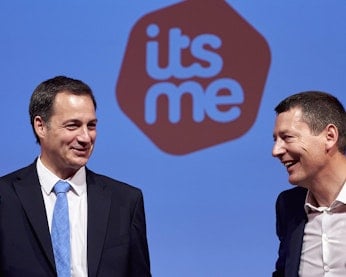
How digital identity is powering telecoms ecosystems
Background and context
The telecommunications industry is at a pivotal crossroads. Traditionally centred around basic connectivity, whether mobile, internet, or broadband, telcos are rapidly evolving into digital service ecosystems encompassing everything from media streaming to financial services and home automation.
As
For telcos aspiring to lead in the digital ecosystem, the challenge lies in offering convenience, innovation, and trust, especially when competing against tech giants like Apple and Google. However, while these platforms set high expectations for seamless user experiences, they fall short in data verification.
Platforms like Apple Wallet and Google Pay allow users to add unverified data, creating vulnerabilities for fraud and diminishing trust. Coupled with growing privacy concerns over how these tech giants use and store data, this opens the door for telcos to offer a distinct advantage.
By leveraging
This blog looks at how telcos can use digital identity to stand out as they shift from basic service providers to full digital ecosystems, enabling them to enhance security, privacy, and UX.
Challenge: Telcos navigating market saturation and competition
European telcos face stagnant or
Consumers no longer perceive providers based on the quality of the network alone. As more consumers shift to streaming entertainment over traditional cable, telecoms are seeing their relevance in the broader digital ecosystem diminish. In fact, 76% of cable customers said they are at least
The growing popularity of Over The Top (OTT) streaming services like Netflix, Spotify, and Amazon Prime Video has shifted the focus of clients to bundled value, or services that offer more than just connectivity. These platforms have successfully captured consumer loyalty by offering exclusive content, personalised recommendations, and seamless user experiences.
For telecom companies, this presents a challenge: OTT players have set a high bar by offering attractive, cohesive ecosystems that integrate entertainment, content, and convenience. In contrast, telecoms still struggle to build similarly integrated digital ecosystems, which often lack the seamless, all-in-one experience to retain consumers.
Telcos often start with a customer ID number linked to a product, which means that at the heart of their UX is the product, not the client. By putting a client in the bucket of one product makes it harder to upsell and cross-sell services to them without involving multiple teams and consequently fragmenting the user journey.
Alternatively, tech giants like Apple place their customer at the centre of their UX, which creates a personalised ecosystem with the Apple ID. This makes upselling and retention more intuitive for tech giants, which integrated connectivity, media, entertainment, and payment services into seamless, cohesive ecosystems.
Telcos need to break free from legacy systems that they have used up to this point.
The shift to telecoms ecosystems as a strategy
To successfully compete against Big Tech and digital-native service providers, telcos must rethink their traditional role. The next wave of growth lies in orchestrating telecoms ecosystems with entire digital experiences, owning the customer relationship and offering modular services that can flexibly integrate media, fintech, and IoT solutions.
According to a
A strong example of the shift to telco ecosystems comes from Turkcell, Turkey’s leading mobile carrier. In 2018, it delayered its business model, shifting beyond traditional telecom services towards a growing into an ecosystem orchestrator for B2C and B2B sectors. Turkcell spun off its portfolio of digital services into standalone platforms, including business messaging, entertainment, fintech,
In the EU,
Collaborations to enhance telco ecosystems
Telcos can go beyond traditional communications, data, and TV bundles by collaborating with external partners to offer integrated services that meet a wider range of customer needs. Rather than relying solely on in-house offerings, telcos can partner with providers in areas like digital security, cloud storage, and smart home automation to create more comprehensive service bundles.
For example, Vodafone UK has
Telefónica in Spain partners with local and global tech companies to offer cybersecurity services and smart living solutions through
To boost competitiveness and digital capabilities, telcos are partnering with Big Tech—like
Additionally, Deutsche Telekom's T-Systems and Google Cloud have
Leveraging trust as a key differentiator for telcos
Trust is fast becoming a major differentiator for EU telcos as they compete with Big Tech companies to be the preferred ecosystems for customers seeking end-to-end digital experiences. In a digital economy where personal data is currency, being the provider that consumers trust most can unlock new revenue streams, higher retention, and a more resilient brand reputation.
While platforms like Apple ID and Google accounts offer convenience, they rely on self-declared or loosely verified information. This makes them vulnerable to fraud, account takeovers, and cybersecurity threats.
There’s a difference between having a unified profile system and having a verified digital ID. Apple ID, for example, is a unified digital profile—not a true digital identity system. The lack of strong user verification in such platforms opens the door to fraud and cybersecurity risks, as users can upload various credentials that cannot be fully verified.
Unlike tech giants, telcos are legally required to verify their users through KYC processes using official identification documents. This means that they already hold verified digital identities—an asset that can be leveraged as a unique selling point. More than merely centralising logins, telecoms can leverage digital identity frameworks that prioritise security, trust, and compliance from the ground up.
Additionally, in recent years, companies like Meta, Google, and Amazon have
Big tech platforms are commercially driven, aiming to capture as much user data as possible and to build dependency around their ecosystems. In such contexts, compliance often comes second to growth. Therefore, telcos have a unique opportunity to position themselves as more transparent and privacy-conscious than Big Tech, especially in services like messaging, cloud storage, or identity verification, where consumer trust is crucial. Ultimately, the ability to build and maintain trust gives telcos a strategic advantage over Big Tech players that face entrenched scepticism.
How verified digital identity enables telcos to deliver a seamless bundling experience
As telecom operators expand beyond connectivity into telco ecosystems, including streaming platforms, fintech apps, and smart home services, identity is emerging as both a strategic advantage and a critical challenge. To stand out in this crowded landscape, telcos must ensure a frictionless, secure user experience across all bundled services. A unified,
In 2017, digital identity platform
Enhancing UX: By integrating a secure, interoperable identity framework, telcos can eliminate fragmented user interactions and enable seamless access across multiple services. Managing multiple logins and passwords is a known pain point for users. Digital identity platforms allow telcos to introduce secure, passwordless logins with built-in multifactor authentication. For example, Belgian telco Proximus uses
itsme ® Personalisation: The streamlined access made possible through digital ID has practical upsides. A family, for instance, can manage devices, adjust data limits, and control content—all from a single interface. Unified digital identity also supports role-based access, allowing telcos to offer tailored bundles for groups like students, small businesses, or households.
Customer service: Digital identity can also resolve long-standing customer service issues. Many telcos struggle to authenticate users efficiently—especially during support calls—leading to frustration and delays. A verified identity solution allows secure, instant authentication, cutting support friction while protecting user data.
Security is another major win. Telcos still rely heavily on outdated methods like SMS for two-factor authentication, which are
no longer secure . Verified digital identity offers a more robust alternative—linking authentication to multifactor authentication and official ID documents rather than vulnerable channels. Unlike traditional login systems, digital identity platforms like itsme® verify a user’s identity using official documents and biometric checks—enabling secure onboarding in just minutes, without compromising on compliance.Compliance: In addition, a verified identity enhances data portability and consent management. Telcos can maintain consistent user preferences across services while giving customers greater control—a key benefit in an EU context where GDPR and eIDAS 2.0 demand high compliance standards. Big tech platforms are commercially driven—they aim to capture as much user data as possible and build dependency around their ecosystems. Digital identity tools like itsme®, however, we have no commercial stake in user data, which makes them committed to providing a compliant, privacy-focused solution. Such platforms advocate for data minimisation, protecting the user’s privacy by design.
